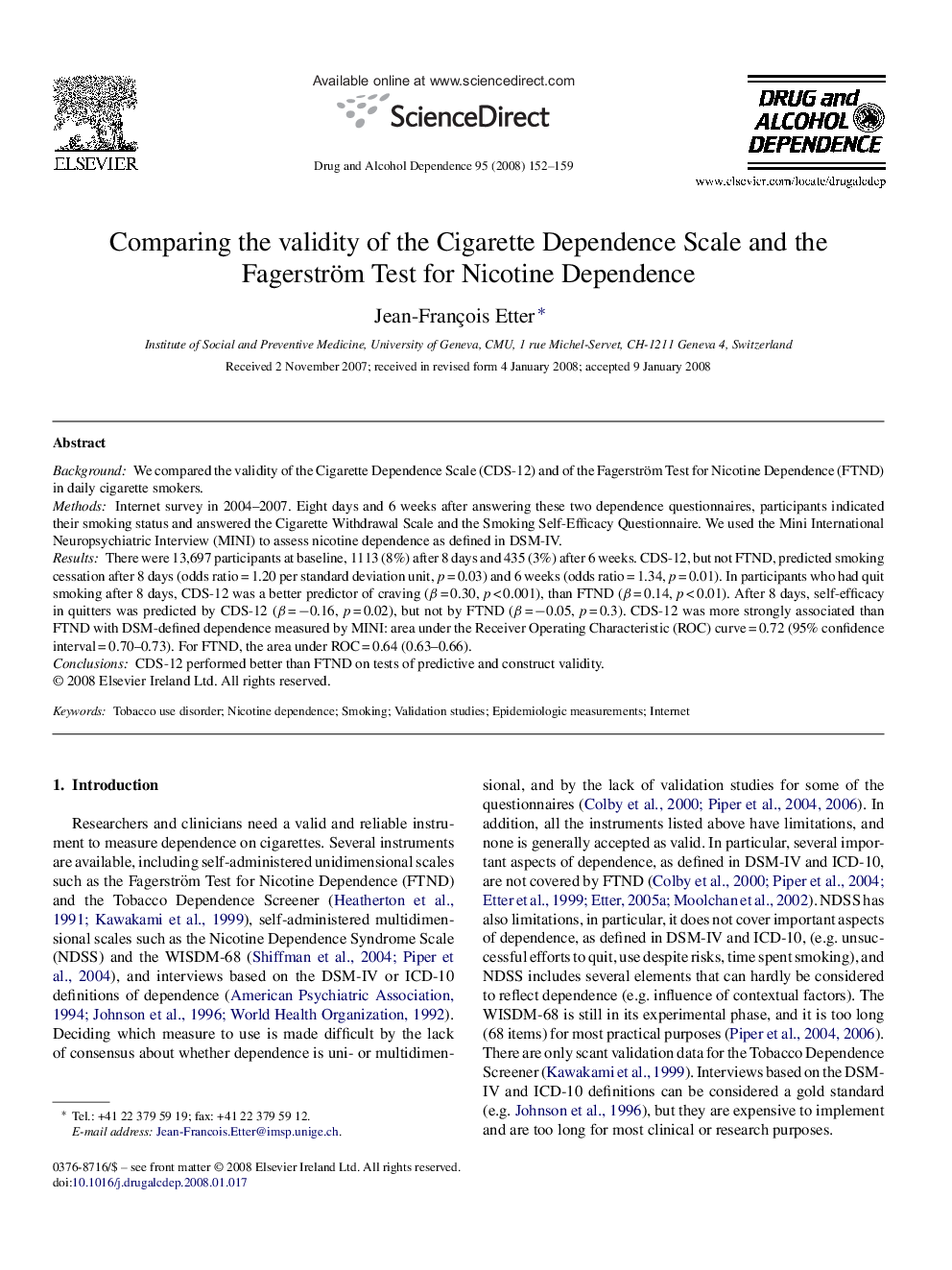| Article ID | Journal | Published Year | Pages | File Type |
|---|---|---|---|---|
| 1070630 | Drug and Alcohol Dependence | 2008 | 8 Pages |
BackgroundWe compared the validity of the Cigarette Dependence Scale (CDS-12) and of the Fagerström Test for Nicotine Dependence (FTND) in daily cigarette smokers.MethodsInternet survey in 2004–2007. Eight days and 6 weeks after answering these two dependence questionnaires, participants indicated their smoking status and answered the Cigarette Withdrawal Scale and the Smoking Self-Efficacy Questionnaire. We used the Mini International Neuropsychiatric Interview (MINI) to assess nicotine dependence as defined in DSM-IV.ResultsThere were 13,697 participants at baseline, 1113 (8%) after 8 days and 435 (3%) after 6 weeks. CDS-12, but not FTND, predicted smoking cessation after 8 days (odds ratio = 1.20 per standard deviation unit, p = 0.03) and 6 weeks (odds ratio = 1.34, p = 0.01). In participants who had quit smoking after 8 days, CDS-12 was a better predictor of craving (β = 0.30, p < 0.001), than FTND (β = 0.14, p < 0.01). After 8 days, self-efficacy in quitters was predicted by CDS-12 (β = −0.16, p = 0.02), but not by FTND (β = −0.05, p = 0.3). CDS-12 was more strongly associated than FTND with DSM-defined dependence measured by MINI: area under the Receiver Operating Characteristic (ROC) curve = 0.72 (95% confidence interval = 0.70–0.73). For FTND, the area under ROC = 0.64 (0.63–0.66).ConclusionsCDS-12 performed better than FTND on tests of predictive and construct validity.
